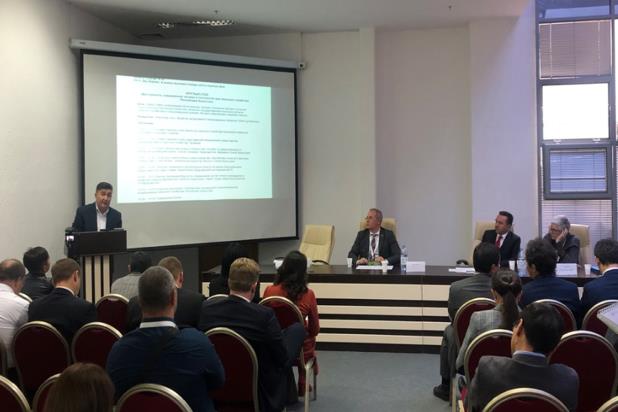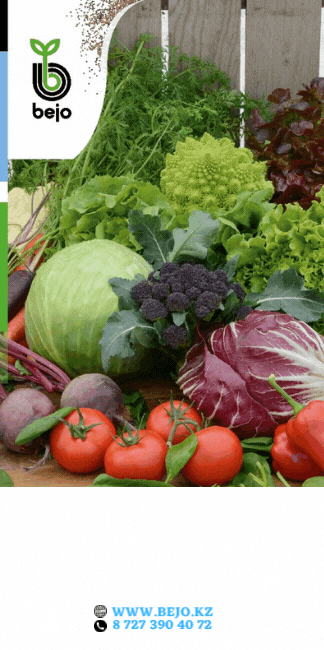
On October 23, 2019, within the framework of the KazAgro / KazFarm exhibition, a round table was held on the topic “Accessibility of modern equipment and technologies for agriculture of the Republic of Kazakhstan”, organized jointly by the Association for Sustainable Development of Modern Agricultural Technologies in Kazakhstan (AMTK) and the German Agricultural Machinery Manufacturers Association VDMA Agricultural Machinery.
The representatives of Agriculture Ministry of the Republic of Kazakhstan, the Federal Ministry of Food and Agriculture of Germany, the leadership of the Grain Union of Kazakhstan, the Meat Union of Kazakhstan, representatives of the German Agricultural Society DLG, as well as leading Kazakhstan agricultural producers, member companies of associations and representatives of leading world brands of agricultural machinery attended the event.
In recent years, agriculture in Kazakhstan has been developing dynamically, which creates good prospects for the development of agricultural exports and expanding markets. According to the USDA forecast, wheat harvest in 2019 will reach 11.5 million tons, barley 3.8 million tons. At the same time, 65% of gross grain production and 53% of oilseeds are produced by medium and large-scale farms. The share of medium and large-scale farms in the total amount of fertilizers and plant protection products (herbicides) ranges from 80 to 90%. A similar share of such farms is also in updating the fleet of agricultural machinery and equipment. Therefore, medium and large-scale farms can be confidently called the driver of agricultural development in Kazakhstan.
At the same time, the roundtable participants agreed that in order to realize the potential of agricultural production and expand sales markets, a number of conditions are needed aimed at transparent regulation and ensuring a stable agricultural policy.
According to grain union estimates, measures are needed in the crop sector to ensure subsidizing of high-quality seeds, fertilizers and plant protection products, creating unimpeded access to modern productive agricultural machinery, introducing new forms of agricultural production risk insurance, increasing the standards for the use of mineral fertilizers and expanding the range of applied plant protection products (for example, through the temporary registration of drugs).
In the livestock industry, according to industry union estimates, a full-fledged livestock development program is required, which has the potential to increase the annual trade balance to $ 2.6 billion. It is necessary to expand rangelands, work to establish irrigation. Moreover, the development of livestock will lead to the development of related industries, which will create significant demand for engineering products and construction, as well as alternative energy.
The roundtable participants agreed that the further growth of the agricultural sector depends not only on macroeconomic and structural indicators, but also on the availability of modern technology, which is rightfully included in the top 3 key success factors in agriculture.
The Kazakhstan Association of Western suppliers of agricultural machinery AMTK notes positive trends in the renewal rate of agricultural machinery in the country, which, after two years of stagnation of the mechanization sector, began to recover in 2019. Moreover, now the agricultural machinery market is subject to a number of negative regulatory factors of market distortions and obstacles to the full realization of agricultural potential.
Over the past few years, the agricultural machinery market has been subjected a series of restrictive measures, such as the relocation of investment subsidies, the exclusion of agricultural machinery from the list of VAT by the credit method, technical regulation, and the introduction of a quotas for the import of combines. All this placed as a heavy burden on the profitability and competitiveness of Kazakhstani farmers.
Currently, discussion is going on the introduction of a disposal fee, which is proposed not as an environmental tool, but as a tool for non-tariff protection of the market. The participants in the round table agreed that in the case of the introduction of disposal fee on foreign equipment, the consequences for the country's agriculture can be very serious, including a significant increase in the cost of productive agricultural machinery, a general increase in prices, a decline in the renewal of the agricultural machinery fleet, scaling back investment activity and stagnation of the mechanization sector.
Participants of the discussion are convinced that reliable, productive equipment and advanced technologies are the most important factor ensuring the profitability and competitiveness of agriculture at every stage, from soil preparation and seed planting before the harvesting and storage of yield, and called on the state to ensure unimpeded access to modern agricultural machinery and eliminate restrictive measures.
Смотрите больше интересных агроновостей Казахстана на нашем канале telegram,
узнавайте о важных событиях в facebook и подписывайтесь на youtube канал и instagram.









































Обсуждение